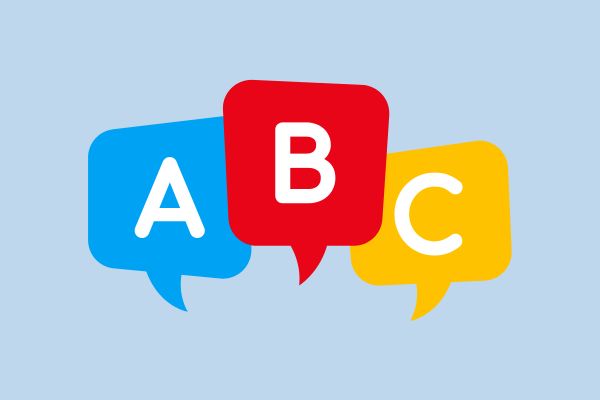Present Tenses with Their Types [Part 2]

The present tenses in English refer to actions or events that are happening now or are generally true. There are three main types of present tenses, each serving a specific purpose in expressing different aspects of the present:
Present Simple
The Present Simple tense is used to describe regular habits, routines, permanent situations, and general truths. It is formed differently for different subjects:
For the base form of the verb (except for the third person singular, which adds -s):
- I/You/We/They play football every Saturday.
- We work in the city.
For the third person singular, add -s to the base verb:
- He/She/It plays football every Saturday.
- She works in the city.
The Present Simple is often used in the following situations:
Habitual Actions
Example: I walk my dog every morning.
General Truths
Example: The sun rises in the east.
Scheduled Events
Example: The train leaves at 9 AM.
Permanent Situations
Example: She lives in London.
Present Continuous (Present Progressive)
The Present Continuous tense is used to describe actions that are happening at the moment of speaking or around the current time. It is formed with the present tense of the verb “to be” (am, is, are) + the present participle (the -ing form of the main verb):
- I am playing football right now.
- She is working on a project.
The Present Continuous is often used in the following situations:
Actions in Progress
Example: They are studying for their exams.
Temporary Actions
Example: He is staying with his friend for a few days.
Future Arrangements
Example: We are meeting at the coffee shop tomorrow.
Present Perfect
The Present Perfect tense is used to describe actions or events that happened at an unspecified time in the past or have a connection to the present. It is formed with the present tense of the auxiliary verb “to have” (have/has) + the past participle of the main verb:
- I have visited Paris several times.
- She has finished her assignment.
The Present Perfect is often used in the following situations:
Unspecified Past Actions
Example: Have you ever travelled to Japan?
Actions Started in the Past and Continue into the Present
Example: They have lived in London for ten years.
Recent Past Actions
Example: I have just finished my lunch.
Present Perfect Continuous (Present Perfect Progressive)
The Present Perfect Continuous tense is used to describe ongoing actions that started in the past and are still continuing in the present. It is formed with the present perfect tense of the verb “to have” (have/has) + been + the present participle (the -ing form of the verb):
- She has been studying for her exams all day.
- They have been working on the project for weeks.
The Present Perfect Continuous is often used in the following situations:
Actions That Started in the Past and Are Still Continuing:
Example: He has been playing the piano for two hours.
Temporary Actions or Situations:
Example: She has been working in the garden all morning.
The present tenses in English refer to actions or events that are happening now or are generally true. There are three main types of present tenses, each serving a specific purpose in expressing different aspects of the present:
Present Simple
The Present Simple tense is used to describe regular habits, routines, permanent situations, and general truths. It is formed differently for different subjects:
For the base form of the verb (except for the third person singular, which adds -s):
- I/You/We/They play football every Saturday.
- We work in the city.
For the third person singular, add -s to the base verb:
- He/She/It plays football every Saturday.
- She works in the city.
The Present Simple is often used in the following situations:
Habitual Actions
Example: I walk my dog every morning.
General Truths
Example: The sun rises in the east.
Scheduled Events
Example: The train leaves at 9 AM.
Permanent Situations
Example: She lives in London.
Present Continuous (Present Progressive)
The Present Continuous tense is used to describe actions that are happening at the moment of speaking or around the current time. It is formed with the present tense of the verb “to be” (am, is, are) + the present participle (the -ing form of the main verb):
- I am playing football right now.
- She is working on a project.
The Present Continuous is often used in the following situations:
Actions in Progress
Example: They are studying for their exams.
Temporary Actions
Example: He is staying with his friend for a few days.
Future Arrangements
Example: We are meeting at the coffee shop tomorrow.
Present Perfect
The Present Perfect tense is used to describe actions or events that happened at an unspecified time in the past or have a connection to the present. It is formed with the present tense of the auxiliary verb “to have” (have/has) + the past participle of the main verb:
- I have visited Paris several times.
- She has finished her assignment.
The Present Perfect is often used in the following situations:
Unspecified Past Actions
Example: Have you ever travelled to Japan?
Actions Started in the Past and Continue into the Present
Example: They have lived in London for ten years.
Recent Past Actions
Example: I have just finished my lunch.
Present Perfect Continuous (Present Perfect Progressive)
The Present Perfect Continuous tense is used to describe ongoing actions that started in the past and are still continuing in the present. It is formed with the present perfect tense of the verb “to have” (have/has) + been + the present participle (the -ing form of the verb):
- She has been studying for her exams all day.
- They have been working on the project for weeks.
The Present Perfect Continuous is often used in the following situations:
Actions That Started in the Past and Are Still Continuing
Example: He has been playing the piano for two hours.
Temporary Actions or Situations
Example: She has been working in the garden all morning.
Calling all law aspirants!
Are you exhausted from constantly searching for study materials and question banks? Worry not!
With over 15,000 students already engaged, you definitely don't want to be left out.
Become a member of the most vibrant law aspirants community out there!
It’s FREE! Hurry!
Join our WhatsApp Groups (Click Here) and Telegram Channel (Click Here) today, and receive instant notifications.






